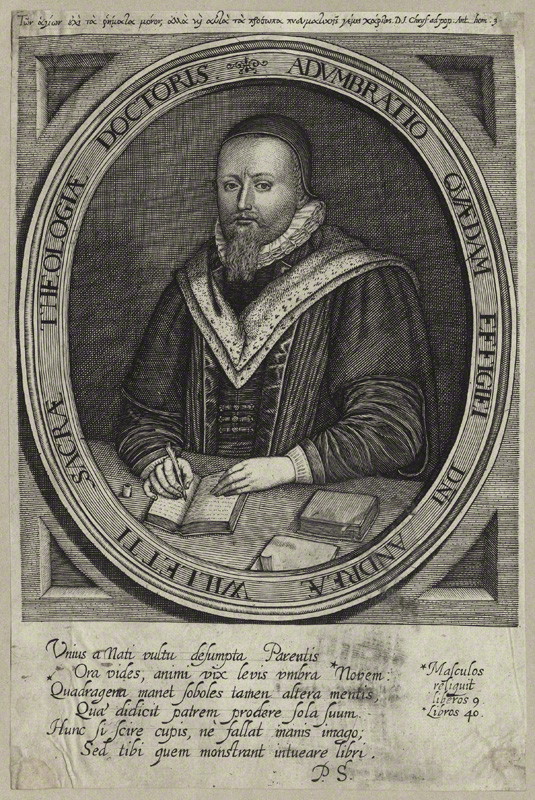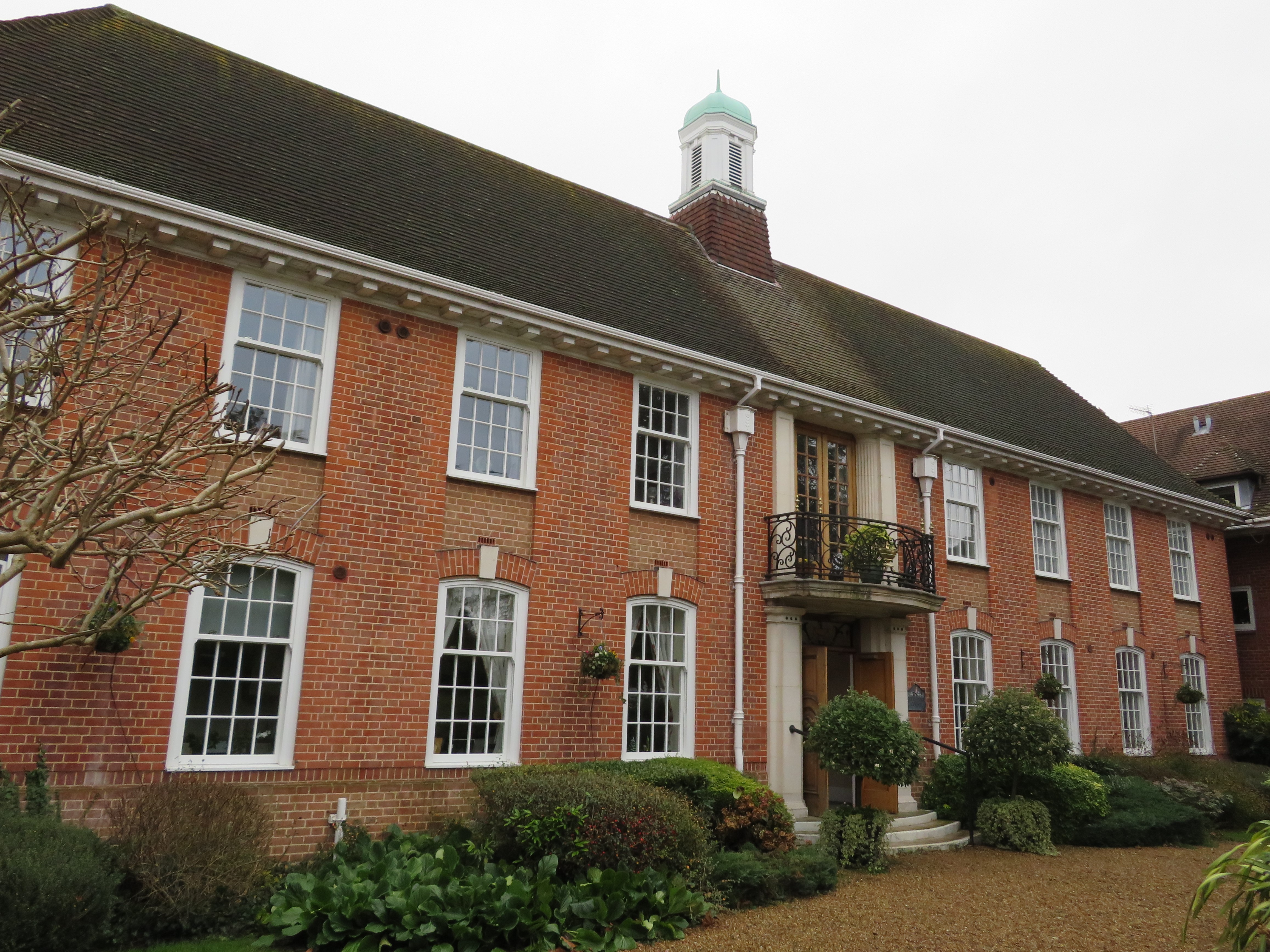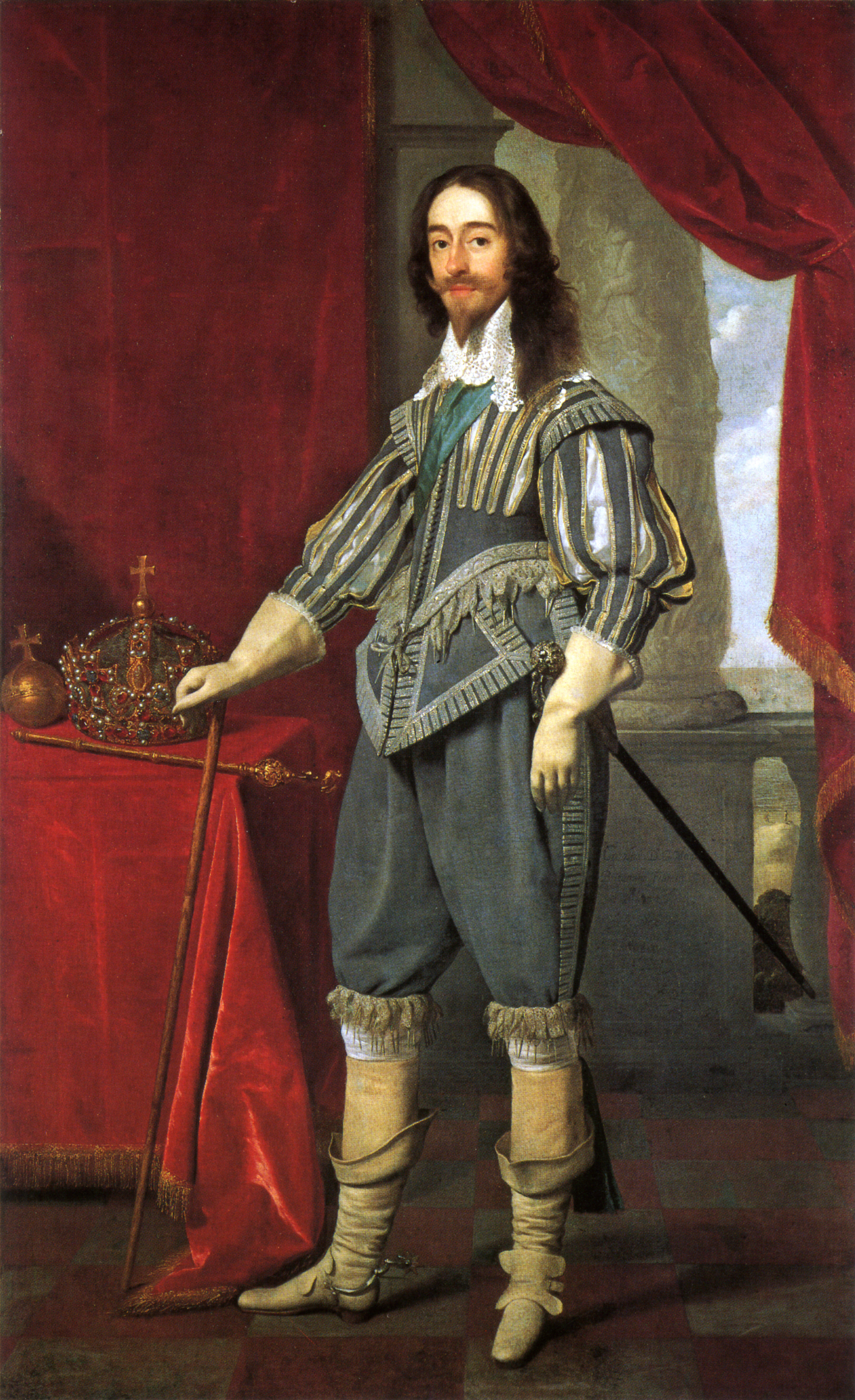|
Andrew Willet
Andrew Willet (1562 – 4 December 1621) was an English clergyman and controversialist. A prolific writer, he is known for his anti-papal works. His views were conforming and non-separatist, and he appeared as a witness against Edward Dering before the Star-chamber. Joseph Hall (who knew him well) eulogised Willet in ''Noah's Dove'', and Thomas Fuller modelled 'the Controversial Divine' of his ''Holy State'' on him. Life He was born at Ely in 1562, son of Thomas Willet (1511?–1598), who began his career as a public notary, and later in life he took holy orders, becoming rector of Barley, Hertfordshire, fourteen miles from Cambridge and admitted to a prebendal of Ely by his patron, Bishop Richard Coxe, with whom he had been associated as sub-almoner to Edward VI. Andrew had one brother and four sisters. After attending the collegiate school at Ely, he entered Cambridge University, matriculating at the age of fifteen (20 June 1577); he first went to Peterhouse, the master ... [...More Info...] [...Related Items...] OR: [Wikipedia] [Google] [Baidu] |
Andrew Willet
Andrew Willet (1562 – 4 December 1621) was an English clergyman and controversialist. A prolific writer, he is known for his anti-papal works. His views were conforming and non-separatist, and he appeared as a witness against Edward Dering before the Star-chamber. Joseph Hall (who knew him well) eulogised Willet in ''Noah's Dove'', and Thomas Fuller modelled 'the Controversial Divine' of his ''Holy State'' on him. Life He was born at Ely in 1562, son of Thomas Willet (1511?–1598), who began his career as a public notary, and later in life he took holy orders, becoming rector of Barley, Hertfordshire, fourteen miles from Cambridge and admitted to a prebendal of Ely by his patron, Bishop Richard Coxe, with whom he had been associated as sub-almoner to Edward VI. Andrew had one brother and four sisters. After attending the collegiate school at Ely, he entered Cambridge University, matriculating at the age of fifteen (20 June 1577); he first went to Peterhouse, the master ... [...More Info...] [...Related Items...] OR: [Wikipedia] [Google] [Baidu] |
Gransden Parva
Little Gransden is a civil parish and village in South Cambridgeshire, England. In 2001 the population was 262 people, including Waresley and increasing to 296 at the 2011 Census. It is 11 miles (18 km) from Cambridge, on the border with the district of Huntingdonshire. Little Gransden has two airfields, one of which was used in World War II. History The village's name is derived from 'valley of a man named Granta or Grante'. It was spelled ''Grantandene'' in 973 and ''Grante(s)dene'' in the 1086 Domesday book. Woodland was important in the settlement's early history; there was enough to support 60 pigs in 1086. By 1251, a large area of woodland in the south-east of the parish had been split into Hayley Wood and Littlehound Wood (the latter no longer exists, but the shape can still be seen in field boundaries). Little Gransden village evolved as an offshoot of Great Gransden. The church and manor house of the abbey of Ely face Great Gransden across the low-lying land alon ... [...More Info...] [...Related Items...] OR: [Wikipedia] [Google] [Baidu] |
Episcopacy
A bishop is an ordained clergy member who is entrusted with a position of authority and oversight in a religious institution. In Christianity, bishops are normally responsible for the governance of dioceses. The role or office of bishop is called episcopacy. Organizationally, several Christian denominations utilize ecclesiastical structures that call for the position of bishops, while other denominations have dispensed with this office, seeing it as a symbol of power. Bishops have also exercised political authority. Traditionally, bishops claim apostolic succession, a direct historical lineage dating back to the original Twelve Apostles or Saint Paul. The bishops are by doctrine understood as those who possess the full priesthood given by Jesus Christ, and therefore may ordain other clergy, including other bishops. A person ordained as a deacon, priest (i.e. presbyter), and then bishop is understood to hold the fullness of the ministerial priesthood, given responsibility b ... [...More Info...] [...Related Items...] OR: [Wikipedia] [Google] [Baidu] |
John Jewel
John Jewel (''alias'' Jewell) (24 May 1522 – 23 September 1571) of Devon, England was Bishop of Salisbury from 1559 to 1571. Life He was the youngest son of John Jewel of Bowden in the parish of Berry Narbor in Devon, by his wife Alice Bellamye, daughter of Richard Bellamye. He was educated under his uncle John Bellamy, rector of Hampton, and other private tutors until his matriculation at Merton College, Oxford, in July 1535. There he was taught by John Parkhurst, afterwards bishop of Norwich; but on 19 August 1539 he was elected scholar of Corpus Christi College, Oxford. He graduated BA in 1540 and MA in 1545, having been elected fellow of his college in 1542. He made some mark as a teacher at Oxford, and became after 1547 one of the chief disciples of Pietro Martire Vermigli, known in England as Peter Martyr. He graduated BD in 1552, and was made vicar of Sunningwell to the south of Oxford, and public orator of the university, in which capacity he had to compose a congr ... [...More Info...] [...Related Items...] OR: [Wikipedia] [Google] [Baidu] |
Ecumenical Council
An ecumenical council, also called general council, is a meeting of bishops and other church authorities to consider and rule on questions of Christian doctrine, administration, discipline, and other matters in which those entitled to vote are convoked from the whole world (oikoumene) and which secures the approbation of the whole Church. The word " ecumenical" derives from the Late Latin ''oecumenicus'' "general, universal", from Greek ''oikoumenikos'' "from the whole world", from ''he oikoumene ge'' "the inhabited world" (as known to the ancient Greeks); the Greeks and their neighbors, considered as developed human society (as opposed to barbarian lands); in later use "the Roman world" and in the Christian sense in ecclesiastical Greek, from ''oikoumenos'', present passive participle of ''oikein'' ("inhabit"), from ''oikos'' ("house, habitation"). The first seven ecumenical councils, recognised by both the eastern and western denominations comprising Chalcedonian Christianit ... [...More Info...] [...Related Items...] OR: [Wikipedia] [Google] [Baidu] |
Robert Bellarmine
Robert Bellarmine, SJ ( it, Roberto Francesco Romolo Bellarmino; 4 October 1542 – 17 September 1621) was an Italian Jesuit and a cardinal of the Catholic Church. He was canonized a saint in 1930 and named Doctor of the Church, one of only 37. He was one of the most important figures in the Counter-Reformation. Bellarmine was a professor of theology and later rector of the Roman College, and in 1602 became Archbishop of Capua. He supported the reform decrees of the Council of Trent. He is also widely remembered for his role in the Giordano Bruno affair, the Galileo affair, and the trial of Friar Fulgenzio Manfredi. Early life Bellarmine was born in Montepulciano, the son of noble, albeit impoverished, parents, Vincenzo Bellarmino and his wife Cinzia Cervini, who was the sister of Pope Marcellus II. As a boy he knew Virgil by heart and composed a number of poems in Italian and Latin. One of his hymns, on Mary Magdalene, is included in the Roman Breviary. He entered the R ... [...More Info...] [...Related Items...] OR: [Wikipedia] [Google] [Baidu] |
Hoddesdon
Hoddesdon () is a town in the Borough of Broxbourne, Hertfordshire, lying entirely within the London Metropolitan Area and Greater London Urban Area. The area is on the River Lea and the Lee Navigation along with the New River. Hoddesdon is the second most populated town in Broxbourne with a population of 42,253 according to the United Kingdom's 2011 census. It borders Ware to the North, Nazeing in Essex to the East, and Broxbourne to the South. The Prime Meridian passes just to the east of Hoddesdon. The town is served by Rye House railway station and nearby Broxbourne railway station. History Early history The name "Hoddesdon" is believed to be derived from a Saxon or Danish personal name combined with the Old English suffix "don", meaning a down or hill. The earliest historical reference to the name is in the Domesday Book within the hundred of Hertford. Hoddesdon was situated about north of London on the main road to Cambridge and to the north. The road forked in ... [...More Info...] [...Related Items...] OR: [Wikipedia] [Google] [Baidu] |
Essex
Essex () is a county in the East of England. One of the home counties, it borders Suffolk and Cambridgeshire to the north, the North Sea to the east, Hertfordshire to the west, Kent across the estuary of the River Thames to the south, and Greater London to the south and south-west. There are three cities in Essex: Southend, Colchester and Chelmsford, in order of population. For the purposes of government statistics, Essex is placed in the East of England region. There are four definitions of the extent of Essex, the widest being the ancient county. Next, the largest is the former postal county, followed by the ceremonial county, with the smallest being the administrative county—the area administered by the County Council, which excludes the two unitary authorities of Thurrock and Southend-on-Sea. The ceremonial county occupies the eastern part of what was, during the Early Middle Ages, the Anglo-Saxon Kingdom of Essex. As well as rural areas and urban areas, it forms ... [...More Info...] [...Related Items...] OR: [Wikipedia] [Google] [Baidu] |
Chishill Parva
Great Chishill is a village and former civil parish, now in the parish of Great and Little Chishill, in the South Cambridgeshire district, in the county of Cambridgeshire, England. The village is about east of the county boundary with Hertfordshire and about east of Royston. In 1961 the parish had a population of 293. The 2011 Census recorded Great and Little Chishill's population as 678. The parish was part of Essex until 1895, when the county boundary was revised. On 26 January 1929 the parish was renamed from "Great Chishall" to "Great Chishill". On 1 April 1968 the parish was abolished to form "Great and Little Chishill". The highest point of the current administrative county of Cambridgeshire, above sea level, is about east of St Swithun's parish church. However, as Great Chishill was historically a part of Essex (having been moved in boundary changes in 1895), the historic county top of Cambridgeshire is about to the east of Great Chishill close to the village of C ... [...More Info...] [...Related Items...] OR: [Wikipedia] [Google] [Baidu] |
Reed, Hertfordshire
Reed is a small village and civil parish in North Hertfordshire. It is situated on a chalk ridge, approximately south of the market town of Royston. The Prime Meridian passes just to the east of the village, between Reed and Barkway. The modern A10 road (here following the course of the Roman Ermine Street) passes just to the west of the village. The population of the parish was 310 at the time of the 2011 census. Reed has a first school, and following a short inspection on 23 March 2017, the judgement of Ofsted was that the school continues to be ‘good’. There is also a village hall, the Saxon parish church of St. Mary, a small chapel (now closed and in private ownership), a cricket club, and a village pub and restaurant set in a 16th-century coaching inn which icurrently closed pending planning applications A converted windmill also stands in the village. There has reportedly been a settlement at Reed for 2,000 years, and the community was mentioned in the Domesday Book ... [...More Info...] [...Related Items...] OR: [Wikipedia] [Google] [Baidu] |
Spanish Match
The Spanish match was a proposed marriage between Charles I of England, Prince Charles, the son of James I of England, King James I of Great Britain, and Infante, Infanta Maria Anna of Spain, the daughter of Philip III of Spain. Negotiations took place over the period 1614 to 1623, and during this time became closely related to aspects of British foreign and religious policy, before breaking down completely. The policy, unpopular with England's Protestant British House of Commons, House of Commons, where the recent Anglo-Spanish War (1585), Anglo-Spanish War had not been forgotten, was initiated during the embassy to England of Diego Sarmiento de Acuña, conde de Gondomar, Gondomar, who arrived in London in 1614 with the offer that Spain would not interfere with James's troubled rule in Ireland if James would restrain the English "privateers" in Spanish American waters. Further, he proposed a marriage alliance, offering a dowry of £500,000 (later increased to £600,000), which ... [...More Info...] [...Related Items...] OR: [Wikipedia] [Google] [Baidu] |
Henry Frederick, Prince Of Wales
Henry Frederick, Prince of Wales (19 February 1594 – 6 November 1612), was the eldest son and heir apparent of James VI and I, King of England and Scotland; and his wife Anne of Denmark. His name derives from his grandfathers: Henry Stuart, Lord Darnley; and Frederick II of Denmark. Prince Henry was widely seen as a bright and promising heir to his father's thrones. However, at the age of 18, he predeceased his father when he died of typhoid fever. His younger brother Charles succeeded him as heir apparent to the English, Irish, and Scottish thrones. Early life Henry was born at Stirling Castle, Scotland, and became Duke of Rothesay, Earl of Carrick, Baron of Renfrew, Lord of the Isles, and Prince and Great Steward of Scotland automatically on his birth. His nurses included Mistress Primrose and Mistress Bruce. Henry's baptism on 30 August 1594 was celebrated with complex theatrical entertainments written by poet William Fowler and a ceremony in a new Chapel Royal ... [...More Info...] [...Related Items...] OR: [Wikipedia] [Google] [Baidu] |







